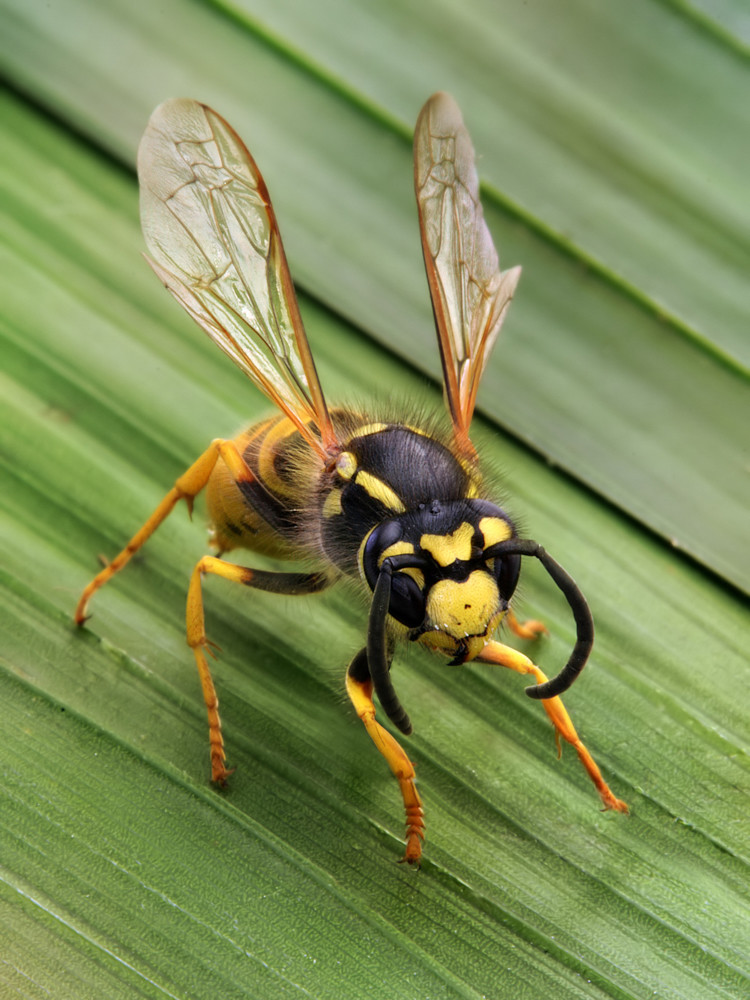Getting to know difference between wasp, hornet, busy bees
All cultures subscribe to a natural law by which their members, as well as outsiders, are expected to abide. These include the obvious, such as a prohibition against murder and theft.
Halacha — Jewish law — also has an unusual but interesting prohibition against eating any part of an animal unless that animal is dead. While this may be in response to some ancient practices, I am always grateful for this dictum when I see a video of a predator tearing its prey apart and gulping some of it while the animal is still clearly alive.
The reproductive behavior of many wasps makes those hunting scenarios seem tame.
While there are some social wasps — those creating a hive with a queen, larvae and workers where each has its defined duties — from the family Vespidae, most wasps are solitary and their reproduction is characterized as “parasitoid.”
Females may or may not build a nest. Regardless, the female will subdue a prey insect with a bite, and then inject her eggs into the living insect. The paralyzed insect will be gradually eaten by the emerging larvae.
Even though wasps are ecologically useful by consuming large numbers of insects, the reproductive process is very distasteful. But some cosmic justice exists.
There are hyperparasitic wasps which lay their eggs in or near wasp larvae developing in a paralyzed insect so that those larvae are, in turn, also parasitized.
A second interesting new twist was recently found in the scrub habitat of south Florida — sandy areas dominated by plants requiring little water such as shrubs and dwarf oak. The gall wasp (family Cynipidae) tricks the tissue of the oak tree to create a bulbous growth around the eggs lined with nutritious material when she injects her eggs into the tree.
In this instance, it is a plant that preys on the wasp larvae (although the larvae are not feeding on a paralyzed insect). The love vine Cassytha filiformis — so-called because it is thought to be an aphrodisiac in the Caribbean — growing around the tree, sends out root-like structures called haustoria, which penetrate the larvae, eventually leaving mummified remains behind.
Hornets are a sub-category of wasp. They are physically bigger with a noticeably larger head and more rounded abdomen than other wasps. Their coloration is generally black and white, while other wasps can be more highly colored.
All hornets are social insects, building papery nests outdoors in trees, shrubs and under eves and decks. Eggs are laid in the nest, and the larvae are fed dead insects. They are extremely aggressive, and if they feel threatened, they release a pheromone (a hormone secreted into the environment; in this case the air) that can mobilize the entire hive.
Yellowjackets are wasps, not hornets.
I have a soft spot for our once-plentiful honeybee, Apis mellifera, order hymenoptera. Apis is Latin for “bee,” and mellifera means “honey-bearing.”
The honeybee was introduced to this continent by European colonists in 1622 as a pollinator for the many introduced European crops such as apples, cherries, peaches and plums. Although honeybees do pollinate crops which are not originally native to Europe, they are less efficient than native pollinators.
Wasps and bees can be distinguished by a number of physical characteristics. Bees have long, fat dangling legs while a wasp’s legs are long and thin. Bees have hairy bodies with a specialized pollen basket called a corbicula on their hind legs. Wasp bodies are either smooth or covered in very fine hairs and they do not have a pollen basket.
The abdomen and thorax of the bee is round, while in the wasp it is cylindrical.
Wasps tend to have narrow waists, which lent itself to the naming of the 19th and 20th century fashion known as the “wasp waist.” This fashion, where women’s waists were tightly girdled, also exaggerated the hips and the bust.
Unfortunately it caused many female maladies.
Since 2007, the honeybee colonies that farmers need to pollinate their crops have gone into serious decline. Apparently, such events have occurred on a more limited scale since 1869.
The present situation has been blamed on a multitude of possible factors including mites and pesticides. Farmers have been turning to other bee species through the Integrated Crop Pollination Project funded by the U.S. Department of Agriculture.
But it is the sight of honeybees flitting from flower to flower industriously collecting pollen and sipping nectar that stirs lazy thoughts of summer. Emily Dickinson, the renowned American poet, avid gardener and botanist, wrote several poems about honeybees. One of my favorites says, “To make a prairie it takes a clover and one bee. One clover, and a bee. And revery. The revery alone will do, if bees are few.”
Have a thought or comment for Sura Jeselsohn? Email her at greenscenesura@gmail.com.









